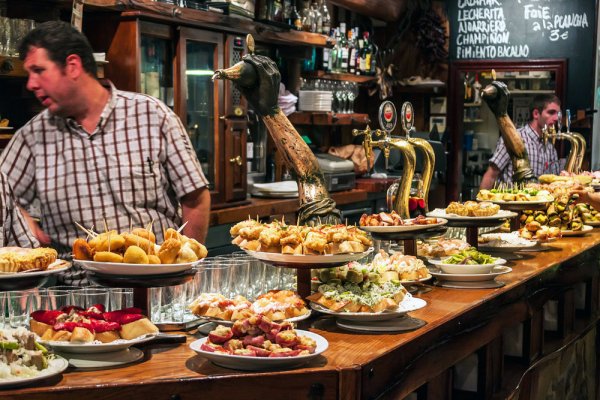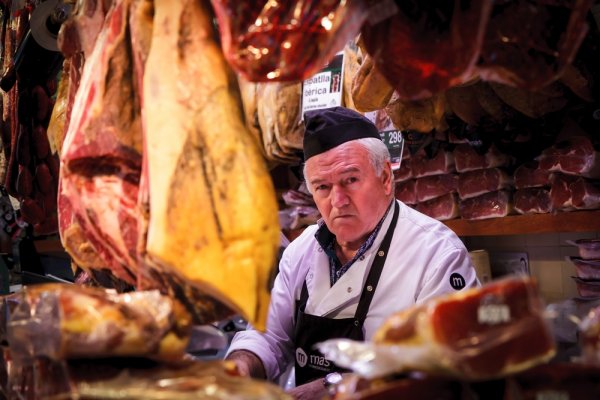Food and Drink: National Cuisine
Spanish cuisine is of the category that can broadly be called Mediterranean, but Spain’s position as part of the trade route between north Africa and the rest of Europe brought other influences as well. The Moors, who occupied Spain from 711 to 1492, introduced irrigation practices that made possible a proliferation of agriculture. For several centuries Spain was part of a back-and-forth culinary exchange with North and South America. Spaniards learned to cultivate new crops brought back from the Atlantic—like tomatoes, potatoes, and corn—while similarly enriching the foodways of the New World through the introduction of cattle, sheep, chickens, and other livestock.
Favorite Foods
Chicken, lamb, pork, and beef are Spain’s favorite meats. Rarer meats, such as rabbit, are common in traditional dishes. Cured meats, like chorizo sausage and jamon serrano (mountain ham), are popular as well. The importance of ham to the Iberian Peninsula diet cannot be overstated. Regional differences in cuisine, especially between the north and south of the country, persist. For example, in northern Spain, lard is commonly used for cooking, while olive oil is standard in the south. Roasting and stewing are the most common food preparation techniques.
Fish and seafood are especially common in Spain's extensive coastal areas, especially the Catalonian and Basque regions. Salted fish is a traditional food farther inland. Perhaps the best-known Spanish dish is a seafood and rice stew from the Valencia region called paella. Cooked in a shallow pan, paella may include shrimp, clams, crab, and lobster, along with vegetables, saffron, and other herbs.
Typical seasonings include onions, garlic, and wine, as well as herbs like bay, thyme, saffron, and rosemary. Vegetables such as tomatoes, peppers, spinach, cucumbers, and asparagus are common ingredients. Olives are a popular ingredient and appetizer. Beans—especially white beans and lentils—are eaten throughout Spain. Wheat-based bread, rice, and potatoes are typical starches. Fresh bread is served at almost every meal, typically with olive oil as befitting any Mediterranean table. Dairy products, especially cheeses, are commonly eaten as both an appetizer and ingredient in other dishes.
Eating Style
Spaniards typically start the day with a small continental-style breakfast. Lunch is the largest meal of the day. Called la comida (literally "the food"), this midday meal includes several courses and typically starts around 2 p.m. Traditionally, businesses will close for two or three hours for the lunch break and then reopen for several hours in the early evening until closing for a late supper. Supper (la cena), which typically starts between 9 and 11 p.m., most often consists of a main course and dessert.
Small snacks called tapas (literally “tiny rations”) are sometimes eaten between meals or as finger food to accompany drinks at a bar. Mixed olives and cheese, anchovies in white wine and vinegar, meatballs, or fried calamari are some examples. Tapas were traditionally a simple affair, but Spanish restaurants around the world have turned them into a sophisticated cuisine.
Copyright © 1993—2024 World Trade Press. All rights reserved.

 Spain
Spain 

